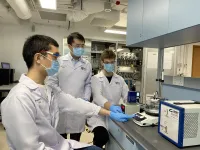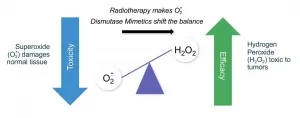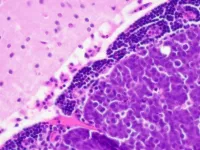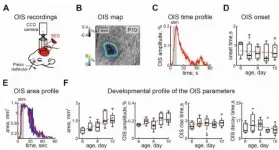New NUS technology completes vital class of industrial reactions five times faster
The research team used oscillating electric potentials to increase the rate of hydrogenation on typical commercial catalysts
2021-05-20
(Press-News.org) Everything from the production of fertilisers and plastics, to liquid fuels and pharmaceuticals require an important chemical reaction known as hydrogenation. This is a process involving the addition of hydrogen to unsaturated chemical bonds. Enhancing the rate of hydrogenation can lead to higher yields for industries and lower environmental impacts.
Now, a team of scientists, led by Associate Professor Yan Ning from the Department of Chemical and Biomolecular Engineering at the National University of Singapore (NUS), has come up with a method to increase the rate of ethylene hydrogenation by more than five times compared to typical industrial rates.
The team achieved this using a radically different approach. Unlike most current hydrogenation processes that use a static solid catalyst to speed up the reaction, the technique developed by NUS researchers applies oscillating electric potentials to a commercial hydrogenation catalyst, which then dramatically increased the hydrogenation rate of ethylene to ethane.
"Such enhancements in the rates or selectivity of chemical reactions are instrumental in making a chemical process more efficient. Our work demonstrates a more direct and cost-effective way of optimising catalyst performance that is beyond conventional methods," Assoc Prof Yan said.
The team's groundbreaking work was published in JACS Au on 14 April 2021.
Enhancing hydrogenation catalysis with oscillating electric potentials
Most hydrogenation catalysts have been developed over many centuries, but the development of new catalysts has been typically limited to conventional material design approaches. A few studies have shown that catalysis can be promoted by applying electric potentials to the catalyst. While these methods have already improved the selectivity and activity of heterogeneous catalysts under static conditions, the use of dynamic external stimuli has been underexplored.
The new findings by the NUS team offer an advanced engineering tool using oscillating electric potentials to promote the rate of chemical reactions without the development of new catalytic materials.
To achieve this, the NUS team carried out experiments using a commercial palladium catalyst in a laboratory-scale electrochemical reactor, and observed a rate enhancement of five times under optimal dynamic conditions. They managed to correlate the rate enhancement with the double-layer capacitance - an indicator of the local electric field strength at the catalyst-electrolyte interface - by using different electrolyte solutions. The properties of the catalyst changed periodically and continuously, which sped up the steps involved in the ethylene hydrogenation reaction.
The researchers conducted further kinetic experiments, which suggested that the enhancement could be related to the partial removal of strongly adsorbed hydrogen from the catalyst surface at a negative potential, and the subsequent adsorption and hydrogenation of ethylene at a positive potential.
The team's findings illustrate the feasibility of using oscillating potentials to improve the catalytic rate of a relatively simple hydrogenation reaction. A similar approach could be extended to control the activity and selectivity of a wide range of catalytic reactions.
Next steps
The NUS team is conducting more studies to improve their understanding of the fundamental principles behind their new technique. They are also looking to further develop their approach into a general strategy for enhancing catalysts beyond their 'static optimum'.
INFORMATION:
[Attachments] See images for this press release:

ELSE PRESS RELEASES FROM THIS DATE:
2021-05-20
People with Alzheimer's disease (AD) are less likely to have cataract surgery than people without Alzheime's disease. The procedure rate starts to decrease already one year after the diagnosis, according to a new study from the University of Eastern Finland.
The lower likelihood of cataract surgery among people with cognitive disorders has been reported previously. This study is the first to report an association between the AD diagnosis and a lower incidence of cataract surgery, and a decrease in the procedure rate related to the time since the diagnosis.
The decrease in the incidence of cataract surgery among people with newly diagnosed AD is concerning because the benefits of this low-risk procedure would probably be similar for people with and without ...
2021-05-20
DALLAS - May 20, 2021 - An experimental drug that has shown promise in protecting healthy tissue from collateral damage caused by radiation therapy for cancer also appears to enhance radiation's capacity to kill tumors, a new study led by UT Southwestern scientists shows. The findings, published online in Science Translational Medicine, could provide a much-needed boost to the radiation treatments used against a variety of tumor types.
The drug, avasopasem manganese (AVA), has already shown promise in clinical trials to prevent a side effect known as acute mucositis. This condition commonly occurs in head and ...
2021-05-20
Elephants and lions are iconic species that help raise substantial funds for conservation. However, they also pose significant threats to people, crops, and livestock, and are themselves threatened with extinction.
Areas at severe risk are identified
In a new article published in the journal Nature Communications, scientists have identified the areas that are most at risk for conflicts between humans and elephants and lions in Africa. They also estimated the associated return on investment of building and maintaining high-quality fences, which are used to reduce conflict between humans and wildlife.
Associate Professor Enrico Di Minin, who is the lead author of this article and leads the Helsinki Lab of Interdisciplinary Conservation Science ...
2021-05-20
Great tits living in cities are genetically different from great tits in the countryside. This is what researchers have found in a unique study, where they examined populations of great tits in nine large European cities.
The researchers compared the city bird genes with the genes of their relatives in the countryside. It did not matter if the great tits lived in Milan, Malmö or Madrid: in order to handle an environment created by humans, the birds evolved in a similar way.
Different gene types linked to important biological functions such as cognition and various behaviours regulated by serotonin, including aggression and circadian rhythms, were found to have been selected and passed on from generation to generation. In rural populations, these behaviours are also ...
2021-05-20
When the United States issued national stay-at-home guidelines in March 2020 in response to the COVID-19 pandemic, mobility across the country dropped significantly. New research from the Harvard John A. Paulson School of Engineering and Applied Sciences (SEAS) demonstrates that people may be inclined to change their behavior in response to national guidelines, more than state and local policies.
"When the next pandemic hits, we need to know what kind of policies are going to have the biggest impact on human behavior and health," said Marianna Linz, Assistant Professor of Environmental Science and Engineering and of Earth and Planetary Sciences at SEAS and senior author of the paper. "While specific, local ...
2021-05-20
Two experimental drug approaches that target vulnerabilities in cancer cell metabolism may extend survival and enhance the effectiveness of standard chemotherapies for a highly aggressive type of pediatric brain cancer.
The findings were reported by Johns Hopkins Kimmel Cancer Center researchers in two published studies.
Medulloblastoma is the most common malignant pediatric brain tumor. A subset of patients with tumors known as Group 3 MYC-amplified medulloblastoma have an overall survival rate of less than 25%. In these patients, the cancer-promoting MYC oncogene drives cancer cell growth by altering cancer cell metabolism. Cancer cells use energy in ways that are different from normal cells, ...
2021-05-20
Researchers in China, Japan, and Singapore were able to resume research much quicker than their counterparts in the US and Europe after the first covid lockdowns, results of a new international survey suggest.
Published 'Open Access' in the peer-reviewed journal Science and Technology of Advanced Materials, the findings of the 'Survey on the effects of the COVID-19 pandemic on research activities of materials scientists', which also included a series of podcasts with eminent experts, highlight how severe the impact of lockdowns affected researchers internationally.
33% of respondents had to shut down all equipment.
The outcomes were not uniform internationally however, as whilst labs in the UK and parts of the USA, Spain, and India were not accessible ...
2021-05-20
DURHAM, N.C. -- Researchers have discovered a new coronavirus, found in a child with pneumonia in Malaysia in 2018, that appears to have jumped from dog to human.
If confirmed as a pathogen, the novel canine-like coronavirus could represent the eighth unique coronavirus known to cause disease in humans. The discovery also suggests coronaviruses are being transmitted from animals to humans more commonly than was previously thought.
"How common this virus is, and whether it can be transmitted efficiently from dogs to humans or between humans, nobody knows," said Gregory Gray, M.D., a professor of medicine, ...
2021-05-20
Study lead, Research Associate of the Neurobiology Lab Marat Minlebaev explains, "Our brain is a complex mechanism, and it's important to understand how it works. If we understand how our brain functions, we can put forth new treatment methodologies or prevent pathologies, both congenital and acquired."
A number of techniques were used to undertake the research, so, apart from biologists, other scientists were also invited to partake.
"Fourth year students Viktoria Shumkova and Violetta Sitdikova conducted experiments and analyzed their results," says Minlebaev. "To implement the idea, new software was ...
2021-05-20
Researchers from Russia and Germany have created a genome-wide atlas of developmental alternative splicing changes of seven organs in six mammal species and chicken.
The research was published in the journal Nature Genetics.
As the protein encoding RNA matures in eukaryotes, it gets spliced, with some parts cut out and the remaining fragments stitched together. Alternative splicing means that the same RNA fragment can either be cut out from or kept within the mature RNA. In this case, one gene can encode several RNAs and, therefore, several proteins. Although alternative splicing is known to be essential for many tissues to develop and function properly and its various disorders may cause health problems, ...
LAST 30 PRESS RELEASES:
[Press-News.org] New NUS technology completes vital class of industrial reactions five times faster
The research team used oscillating electric potentials to increase the rate of hydrogenation on typical commercial catalysts




